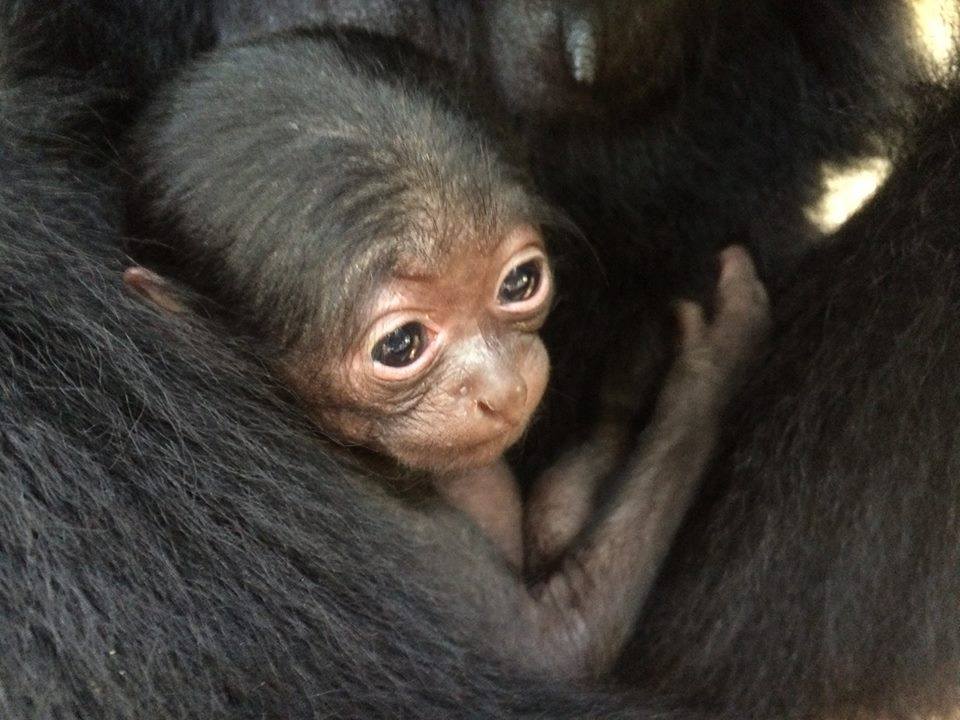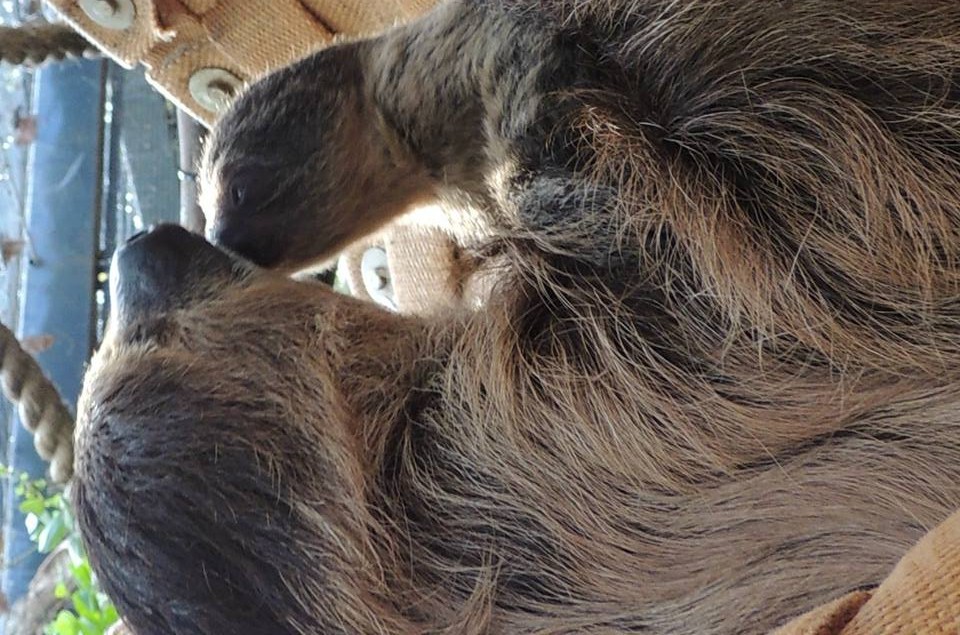April was a very busy month at the Honolulu Zoo!
A Linnaeus’s Two-Toed Sloth was born April 20th and a Siamang Gibbon was born April 29th at the zoo, and both babies are healthy and thriving.
The soon-to-be-named baby sloth is the first one born to mom, Harriet, at the Honolulu Zoo, and zoo officials don’t yet know the animal’s gender. That’s because they don’t want to disturb mom and baby during this very important bonding time.
And, they just re-introduced dad into the enclosure with mom and baby. The reason why may surprise you.
According to a zoo official, “There was a little misunderstanding between the parents. Dad had the baby on him instead of mom.”
Mother and baby are doing well, and they are both on exhibit. However, Harriet is quite protective of her new offspring, and visitors will need to have patience if they want to catch a glimpse of the new family.
The Linnaeus’s two-toed sloth, also known as the southern two-toed sloth or Unau is one of two species of two toed sloths.
The Linnaeus’s two toed sloth lives exclusively in warm, moist environments of South American rainforests and tropical deciduous forests.
Though listed as Least Concern by the IUCN in view of its wide distribution, the habitat of Linnaeus’s two toed sloth is steadily decreasing due to the deforestation of the South American rainforests to clear room for farming, residential areas, and ranching.
Modern Sloths are divided into two families, based on the number of toes on their front feet. Linnaeus’s Two-Toed Sloth and Hoffman’s Two-Toed Sloth are larger than their three-toed counterparts. They also possess longer hair, bigger eyes and their back and front legs are more equal in length.
Just nine days after the baby sloth was born, the Honolulu Zoo welcomed another baby animal, a Siamang Gibbon.

As with the baby sloth, the sex of the infant isn’t yet known because it’s mother keeps it very close. But, visitors will likely be able to catch a glimpse of the new baby and its family as they swing around and call to each other.
Initially, the Mother and baby were kept off exhibit to allow bonding and for staff to monitor that the baby was healthy and nursing before releasing them onto exhibit.
There are four Siamang at the zoo. The adult male is “Elvis.” The adult female is “Mahina.” A young female, “Haumea,” is 2 years, 7 months old. She is the big sister to the tiny infant.
This pair is considered genetically valuable by the SSP (Species Survival Plan) so this addition is especially important.
Siamangs are listed by the IUCN as an endangered species and the species in the wild has declined by at least 50% over the last 40 years mainly due to hunting and habitat loss.
Siamangs live in primary and secondary forests of Indonesia and the Malay Peninsula (Malaysia and the southern part of Thailand).
Siamangs are apes not monkeys and are noted for their loud territorial calls.

Zoo officials say both animals will soon adventure out on their own away from mom, so viewing them should get easier and easier.




